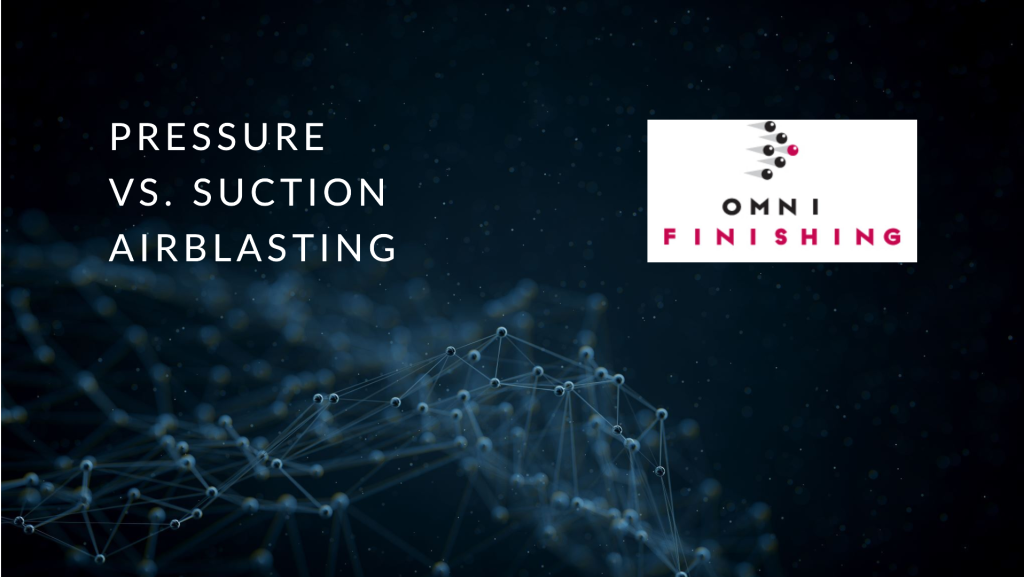What is Pressure Airblasting?
Pressure Airblasting operates by storing abrasive materials within a pressurized tank. When your machine is activated, compressed air forces the abrasive material out of the tank through a nozzle.
Advantages of Pressure Blasting
- Speed: Pressure blasting is considered much faster than suction.
- Variety: Can be used on a wide range of products.
- Labor Time: Reduces labor time as the job can be completed on fewer passes than suction blasting.
Disadvantages of Pressure Blasting
- Higher Equipment Costs: Pressure systems are often more expensive than suction systems due to the specialized equipment that is required.
- Higher Wear and Tear: The increased velocity of the system leads to faster wear and tear then on a suction system.
- Limited Cycle: Every so often you will need to re-pressurize the pot. So you will not be able to continuously blast like you can on a suction system.
What is Suction Airblasting?
Suction Airblasting, also known as siphon blasting, works by drawing abrasive material from a container using a vacuum created by compressed air.
Advantages of Suction Blasting
- Cost Efficient: Suction blasting has a lower operating cost which makes this option more budget friendly.
- Easy to Use: The setup is much simpler which makes this system much easier to use.
- Less Aggressive: This is beneficial for more delicate materials that a pressure system would tear up.
Disadvantages of Suction Blasting
- Reduced Efficiency: The lower abrasive velocity may require multiple more passes in comparison to pressure blasting.
- Limited Range of Abrasives: Not all abrasives perform well in suction systems which limits suction versatility.
Conclusion
Choosing between Pressure Airblasting and Suction Airblasting depends on specific project requirements, budget considerations, and the materials being worked on. Pressure Airblasting is optimal for large-scale projects needing aggressive cleaning or surface preparation, while Suction Airblasting is more suited for smaller tasks or sensitive surfaces that require a gentler approach. By understanding the strengths and weaknesses of each method, businesses can make informed decisions that enhance productivity and effectiveness in their operations.
 Proudly Serving Since 1986
Proudly Serving Since 1986
